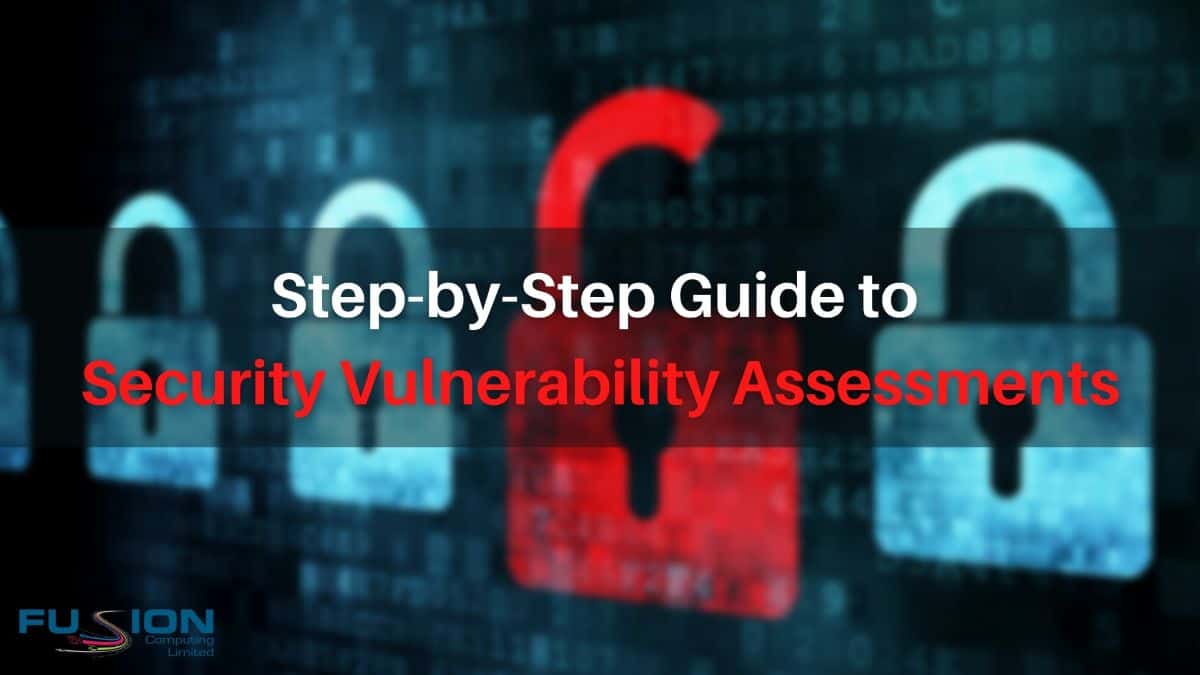As an IT professional, you know how important security and risk management are to your networks’ infrastructure and the company’s information security. You should also know that to keep the integrity and security of your network, you need to carry out regular cyber security vulnerability assessments.
What Is a Vulnerability Assessment?
A vulnerability assessment is a review and analysis of your organization’s network to find any security vulnerabilities and network security loopholes that make it easy for hackers to get through.
In this article, we’ll show you how can gauge your security apparatus and assess its effectiveness. We’ll talk about:
- When to perform an assessment
- Consequences if you don’t
- Type of assessments
- Performing an assessment yourself step-by-step.
Free Cyber Security Assessment
|
Purpose of a Vulnerability Assessment
Vulnerability assessments are a valuable tool that every organization should have at its disposal. Forgoing this crucial component of cyber security could cost your organization millions of dollars in lost productivity, reputational harm, and corrective action.
An IT vulnerability assessment tells you how secure your IT is against potential cyber attacks.
It helps uncover any vulnerabilities that your network has that would weaken its cloud security against cyber attacks. Since every company has different IT set-ups, a vulnerability assessment should be tailored to suit its IT environment.
When to Perform a Vulnerability Assessment?
Vulnerability assessments are typically performed once per quarter, but depending on your organizations’ needs, you may have to perform an assessment more regularly like once per month. These are generally performed by IT teams, with support from outside vendors or vulnerability scanning software.
Skipping out on a vulnerability assessment can lead to a few unfortunate consequences, like undetected threats and a higher risk of data breaches. Vulnerability assessments can pinpoint security weaknesses in your system, so it’s important that you conduct them regularly.
Types of Cyber Vulnerability Assessments
There are many types of vulnerability assessments – you have to determine which one (or more than one) is right for your company. Here are a few that are performed routinely by IT teams.
- Network-based assessment: This type of assessment helps you find flaws in your wired and wireless networks. This assessment will look for any unknown or unauthorized devices on your networks.
- Database assessment: A database assessment detects any loopholes in your database that would make it easier for malicious attacks or hacking.
- Application security assessment: This assessment scans all your web applications and their source code in order to identify vulnerabilities or holes in security.
- Host-based assessment: Use this assessment to examine potential weaknesses or threats in individual workstations that are hosted by your server.
It may be tempting to search for vulnerability assessment examples and plan yours along the same lines, but it’s vital your assessment is suited to your IT systems.
| More IT Assessments You May Be Interested In: |
How to Perform an IT Vulnerability Assessment in Four Steps
Now, let’s go over the vulnerability assessment process. There are four main steps involved in performing an assessment. Each step has varying levels of tasks and requirements and is equally important for thorough vulnerability management.
Generally, these assessments are done in a team setting or by an outside vendor.
Step 1. Define the Scope of the Vulnerability Assessment
You have to have a plan going into your vulnerability assessment so that you can properly execute it. In the scope of your assessment you should include:
- The appropriate personnel to be involved
- The location where your most sensitive data is stored
- The systems you’re assessing and the type of vulnerability assessment you’re using
- Which servers run mission-critical tasks and applications
- An entire map of your IT infrastructure
Defining the scope ahead of the vulnerability assessment helps you stay organized, meet your goals and delegate tasks.
Step 2. Use Vulnerability Scanning to Identify Threats
In this step, you’ll identify the vulnerabilities in your network. The best way to perform this step is by using vulnerability scanners to most accurately find the vulnerabilities in your network. You’ll also have to conduct manual security tests like penetration testing, during which you externally test the strength of your networks’ security.
Note: it’s a much more challenging and involved process to attempt a manual vulnerability assessment without support from scanning tools or other software. We recommend partnering with a trusted security assessment vendor to work with you on your assessment.
Step 3. Analyze Your Findings
If you use a scanning tool, you’ll receive a report with the risk ratings of everything you assessed. Most tools use a common vulnerability scoring system (CVSS). If you’re not using a scanning tool and doing your vulnerability assessment manually, you’ll have to rate each piece manually too.
Once you’ve got risk ratings for all components of your network, start identifying the areas of risks and vulnerabilities so that you can create a plan to treat those areas.
Step 4: Fix Vulnerabilities
Now that you know what your vulnerabilities and areas of risk are, you have to take action to fix them. Common fixes include implementing new security tools, replacing older software, updating necessary equipment, and more.
These are fully dependent on the findings from your assessment. For example, if you have been using the same software product for a number of years and it has a high vulnerability rating, consider replacing it with a less vulnerable product.
This Is the Key to an Effective Security Vulnerability Assessment
Unless you have advanced cyber security expertise in-house, seeking assistance from a security provider is advisable. They’ll bring the up-to-date knowledge and experience needed to perform an effective vulnerability analysis (and provide insight into addressing issues).
For a limited time, Fusion Computing is offering businesses like yours a FREE cyber security assessment. We’ll identify hardware, cloud and software vulnerabilities in your systems and help you make informed decisions about your IT.




